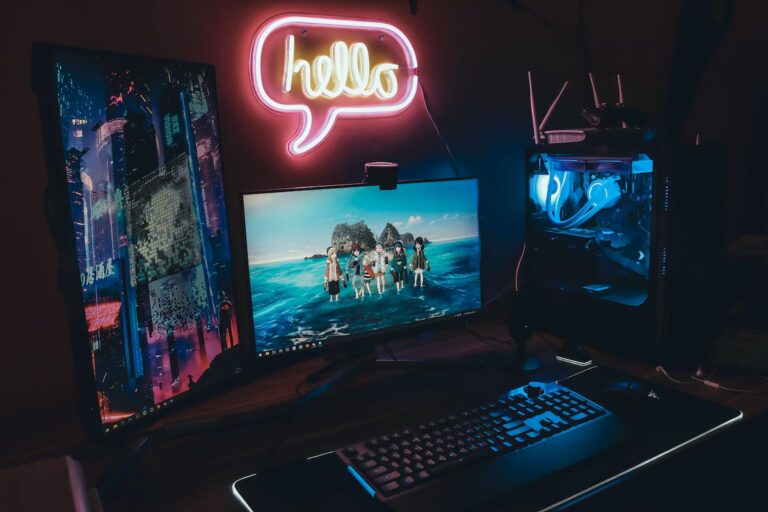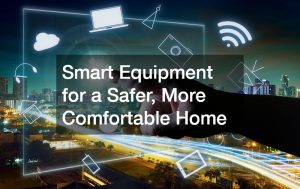As more people get into streaming and game recording, their need for the proper equipment grows. The capture card has become a necessity to stream gameplay on all platforms, including PC, Xbox, and PlayStation.
This guide is intended for beginners who want to learn how to use a capture card and get the most out of their streaming experience. With this guide, you can enhance your streaming quality and reach a wider audience.
What is a Capture Card, and Why Do You Need One?
What is a capture card? A capture card is a piece of hardware used to record and stream video from gaming consoles, PCs, and other devices. It is a must-have tool for streaming and recording video, allowing you to capture footage in real-time. It is also used to stream and record gameplay from multiple systems simultaneously. This means you can capture footage from two systems simultaneously, allowing you to create multi-platform videos.
Using a capture card to stream or record gameplay has many benefits. Firstly, it allows for higher-quality video and audio than what is typically available on consoles and PCs. Typically, capture cards provide full HD resolution with a frame rate of up to 60fps, meaning your gameplay will look professional and smooth.
Additionally, the capture card lets your device breathe. Unlike directly recording on a console or PC, the capture card takes the load off your device, allowing it to focus more on running the game than encoding the video. This can lead to more stable and consistent performance, as your device won’t be overloaded.
Different Types of Capture Cards
When it comes to capture cards, you have two options: internal and external. Internal capture cards are built into your PC or laptop and are typically used for 1080p recording and streaming. They are easy to install and often come with software for streaming. However, they are more expensive than external capture cards due to their complexity and reliability.
External capture cards, on the other hand, are more affordable and easier to set up. They plug into your PC or laptop via a USB port, making them the perfect choice for those who don’t want to commit to an internal capture card. They are also typically used for 1080p recording and streaming, but they don’t offer as high of a quality as an internal capture card.
The most popular internal capture card is the PCIe (Peripheral Component Interconnect Express), the most reliable and highest-quality capture card available. It connects directly to your PC’s motherboard, maximizing performance and reliability.
On the other hand, the most popular external capture cards are USB 3.0, which connects to your PC via a USB port and is perfect for 1080p recording and streaming. It is also compatible with most systems, making it the ideal choice for beginners.
Elgato’s HD60 S, AVerMedia’s Live Gamer Portable 2 Plus, and Razer Ripsaw are some of the most popular capture cards for game recording and streaming. Elgato’s HD60 S is a PCIe capture card that allows 1080p recording and streaming with up to 60fps. AVerMedia’s Live Gamer Portable 2 Plus is a USB 3.0 capture card compatible with various systems and allows for 1080p recording and streaming with up to 60fps. Finally, Razer’s Ripsaw is an external capture card that allows 4K streaming and 1080p recording at 60fps.
Setting Up Your Capture Card
Setting up your capture card is an essential and necessary step in getting the most out of your streaming experience. Although different capture cards have different requirements, the process is generally the same for all.
First, you’ll need to install the capture card. If you’re using an external capture card, it is as simple as plugging it into the right port of your device. But if you’re using an internal capture card, install it on your PC or laptop. You must open your computer and install the card into the correct PCIe slot.
Once the capture card is installed, you can install any necessary drivers and software. The manufacturer of your capture card should provide instructions and drivers for easy installation. You may also need to install additional software, such as recording or streaming software. You can connect your capture card to the game console or device you want to stream from and start streaming.
Choosing the Right Capture Card for Your Needs
When selecting a capture card, there are several factors to consider. Firstly, you should decide whether an internal or external capture card is right for you. An internal capture card may be more reliable, but it requires opening up your PC or laptop and installing the card, which is not for everyone. An external capture card is more affordable and easier to set up but offers lower-quality video than an internal one.
You should also look at the features available on the capture card. Many capture cards now come with advanced features such as recording and streaming software, support for 4K resolution, and compatibility with various devices. The more features the capture card has, the better it will be for streaming. But of course, these features come at a cost, so consider your budget before purchasing.
Finally, you should consider the compatibility of the capture card with your device. Make sure that the card you choose is compatible with your system before buying it, as this will prevent any issues.
Depending on the device you want to record or stream from, you should also consider the type of capture card. For example, if you are recording from a console, you may need an HDMI capture card. This might also be the case for PC gaming; you may need an HDMI or DisplayPort capture card, depending on your system.

Game Recording with a Capture Card
Configuring Settings for Optimal Game Recording
You’re ready to start recording once you’ve installed your capture card and software. Before doing so, however, it is important to configure the settings for optimal game recording. Configuring your streaming settings can be done using the software provided with the capture card.
First, you should set the resolution and frame rate of the video. You should also configure any video settings, such as color correction, brightness, contrast, and saturation. Different capture cards have different settings for these options; just follow the manufacturer’s instructions for the best results.

You should also set up audio settings, such as microphone input and output levels. Finally, you should set up your streaming software and configure any settings. This may include setting up a streaming platform and account settings, such as login info.
Recording Gameplay Footage
You’re ready to start recording once you’ve configured all the settings. To do this, just press the record or stream button on the capture card’s software or hardware. Depending on your capture card, this may be as simple as pressing a button on the capture card itself. You can then save the footage to your device or upload it directly to a streaming platform.
Tips for Capturing High-quality Game Footage
Capturing high-quality game footage requires more than just having the right hardware. Try to keep the following tips in mind for the best results:
- Make sure your streaming or recording software is up to date.
- Configure the settings for optimal performance.
- Make sure the game runs at its maximum resolution and frame rate.
- Set up the right microphone input and output levels.
- Use a high-speed internet connection for streaming.
- Utilize the features of your capture card, such as 4K streaming or 1080p recording.
Game Streaming with a Capture Card

Configuring Settings for Optimal Game Streaming
Like game recording, game streaming requires configuring the settings for optimal performance. Most capture cards have software designed specifically for streaming, such as Elgato’s Game Capture HD. Follow the instructions provided with your capture card for configuring the streaming settings. These may include setting up a streaming platform like Twitch or YouTube Gaming and configuring the stream resolution and frame rate.
Streaming on Popular Platforms
Once you’ve configured the settings, you can start streaming. Most streaming platforms allow you to stream directly from your capture card. Some of the most popular platforms are Twitch, YouTube Gaming, and Mixer. Depending on your capture card, you can stream from two systems simultaneously.
Tips for Streaming High-quality Game Footage
If you want to get the most out of your streaming experience, then you should keep the following tips in mind:
- Use the latest streaming software.
- Make sure your game runs at maximum resolution and frame rate.
- Find the right streaming platform for your game.
- Use a fast and reliable internet connection.
Advanced Features and Tips
Of course, you want to ensure you get the most out of your streaming experience. That’s why exploring the advanced features available on your capture card is important. Some of the most common advanced features include:
- Chroma-keying for green screen effects.
- Picture-in-picture mode for adding multiple video sources.
- 1080p or 4K streaming support.
- Audio mixing capabilities.
- Support for multiple streaming platforms.
For the best results, you should also consider utilizing the features of your software. This may include editing the video or audio before streaming, adding graphics or text to the video, and much more.
Troubleshooting Common Issues
You should be aware of the common issues that can arise when streaming or recording. These may include poor video quality, audio distortion, and other glitches. If you experience any of these problems, ensure that your settings are correct and that you have installed the latest software. You should also make sure that your internet connection is fast and reliable. If the problems persist, consider contacting the manufacturer for further assistance.
Protecting Your Content and Rights
As a streamer or content creator, it is important to understand copyright and intellectual property laws. You should not be using any content that you do not have the right to, even if it’s just for personal use. Doing so can lead to legal issues and put you at risk of having your content taken down or even being sued.
You should also be aware of the laws surrounding streaming and recording. For example, some games are protected by digital rights management (DRM). This means you may not be allowed to stream or record them without permission. To protect your content and rights, check the terms of use for any games or other content you plan to stream or record. If in doubt, refer to the help files of your capture card or streaming software for more information.
Frequently Asked Questions
Can I stream or record games without a capture card?
You can stream and record games without a capture card. Some consoles and PCs allow you to stream directly from the system. However, capture cards provide more control over settings and a higher-quality output; in most cases, they are the best option for streaming or recording.
Can I use a capture card without a PC?
You can use a capture card without a PC. Some capture cards are designed for game consoles or other devices without needing a PC. These capture cards typically plug directly into the device, allowing you to record or stream without a computer.
What software do I need to use a capture card?
Most capture cards come with their own software for streaming and recording. However, in some cases, you may need to purchase additional software, such as a streaming platform or video editing software. Check the manufacturer’s website for more information on the software required for your capture card.
Do I need a GPU for streaming and recording?
You don’t necessarily need a dedicated GPU (graphics card) for streaming and recording; however, it is recommended. A dedicated GPU will provide better performance and allow for higher-quality streaming or recording. Some capture cards also require a GPU with specific specifications, so make sure to check the requirements before purchasing.
Conclusion
Capture cards are a great way to record and stream games. They allow for high-quality video, audio, and other features such as chroma-keying and picture-in-picture. They’re also easy to use; you only need the right hardware, software, and settings. Before purchasing a capture card, consider your budget and needs. Make sure you understand copyright and intellectual property laws to protect yourself and your content. Finally, utilize the features of your capture card and streaming software to maximize your streaming experience.
If you’re a beginner streamer or content creator, using a capture card can be an exciting way to explore the world of streaming. With some time and effort, you can create high-quality content that will keep your viewers engaged and entertained.




